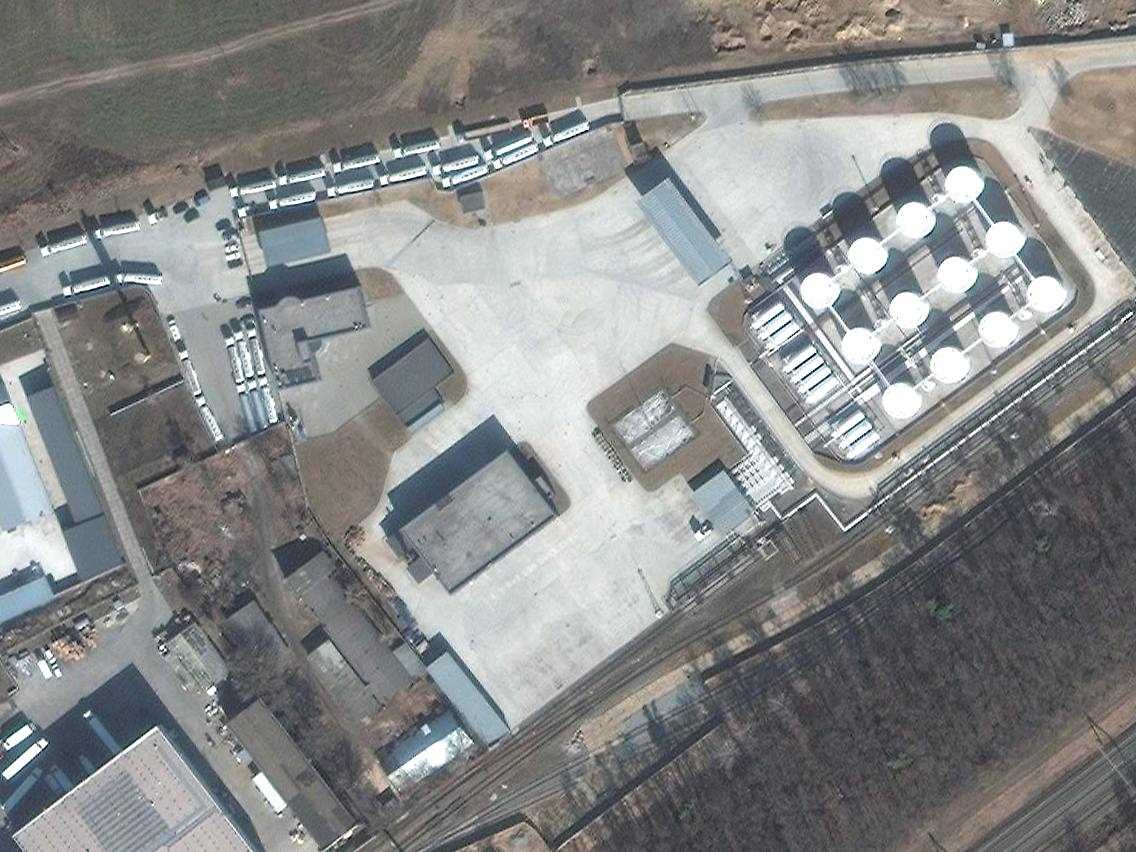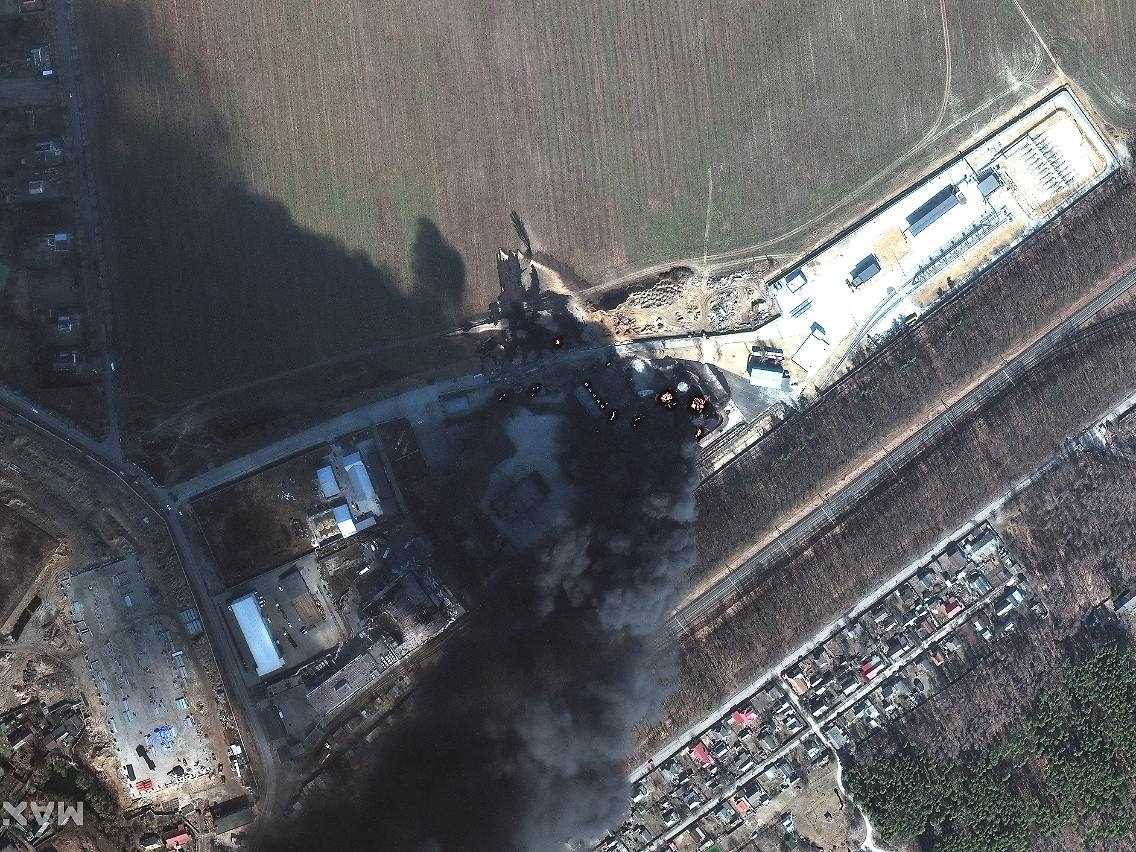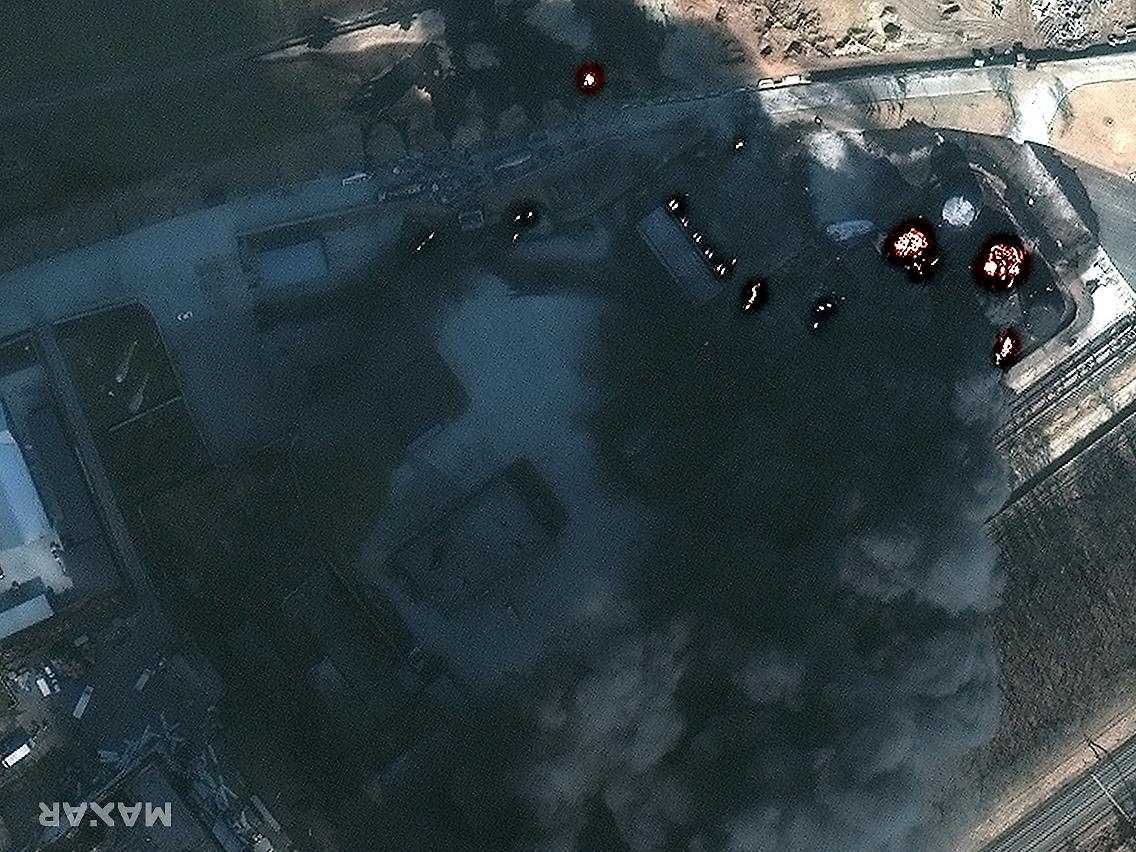Satellite images show attack
Russian bullets hit fuel depot
By Martin Morcinek
03/28/2022, 4:14 p.m
The war in Ukraine brings death and destruction: Since the Russian offensive has faltered on the ground, targets behind the front line are increasingly being targeted. A heavy air strike hits a fuel depot. Satellite images show the extent of the damage.
According to their own statements, the Russian armed forces destroyed one of the largest fuel depots in the south-west of Kyiv with a night-time rocket attack at the end of last week. The camp in Kalynivka was shot at with Kalibr cruise missiles on Thursday evening, a spokesman for the Russian Ministry of Defense said. There was no confirmation from the Ukrainian side. Current satellite images from an independent source allow a view of the attack site.
The village of Kalynivka (Калинівка) with around 5000 inhabitants is located around 32 kilometers southwest of the Ukrainian capital near the M05/E95 trunk road, which runs south from Kyiv via Bila Tserkva and Uman to Odessa. The small town of Kalynivka had so far been largely spared from hostilities.
However, the front lines are not far away: the Ukrainian defenders were able to stop the Russian armored spearheads around 20 kilometers north of Kalynivka on the highway to Zhytomir (M06/E40). The Russian offensive seems deadlocked. If the planned siege of Kyiv had come about, Kalynivka would have been in the middle of the Russian ground troops’ path of attack.
The Kalynivka fuel depot before the attack:
Photo from March 18: The fuel situation north-east of Kalynivka station.
(Photo: Copyright: Satellite Imagery © Maxar Technologies Provided by European Space Imaging)
Barely a week before the Russian airstrike, there was no damage to be seen at the Kalynivka fuel depot site – and no Ukrainian military vehicles either. The satellite from which the images originate flew over the area in the late morning, as can be seen from the shadows cast by the buildings, among other things. On that Friday, March 18, the fuel depot site appears deserted.
There are no signs of regular operation within the enclosing wall. The loading terminal seems deserted. The operator’s tanker trucks are parked outside the facility. Nearly two dozen white trucks are parked side by side on both sides of the access road on the side facing away from the village. Was this fuel depot no longer in operation?

Enlarged section of the recording from March 18: Friday morning is “one of the largest fuel depots in Ukraine” not in operation?
(Photo: Copyright: Satellite Imagery © Maxar Technologies Provided by European Space)
However, Kalynivka must have been noted as a strategic goal on the maps of Russian military planning for a long time: One of the most important railway lines from Kyiv runs through the town in a southwesterly direction. Trains heading from the capital of Ukraine towards the main seaport of Odessa pass through Kalynivka.
However, the Russian air strike was apparently not aimed at the Kiev railway connection. Kalynivka is a stopping point for passenger traffic, but also has a rail terminal for unloading tank wagons. There is a large industrial area to the east of the town. Another two kilometers further is the Ukrainian air force base near Wassylkiv, which was already the target of Russian attacks in the first days of the war. The base is only about four and a half kilometers from Kalynivka.
The Kalynivka fuel depot after the attack:

Burning fuel tanks the day after the Russian missiles hit: This photo was taken on March 25.
(Photo: Copyright: Satellite Imagery © Maxar Technologies Provided by European Space)
As can be seen clearly in the images from space, the Russian rockets struck north-east of the town center in a narrow radius in the middle of the fuel tanks. The fuel depot north of the railway line is obviously not a military facility: the facility is openly listed in all map services. The tanks are neither camouflaged nor specially protected.

Enlarged image of March 25: fuel tanks are an easy target for Russian Kalibr cruise missiles.
(Photo: Copyright: Satellite Imagery © Maxar Technologies Provided by European Space)
Originally, civilian tankers were loaded with petrol, diesel and heating oil from here in order to ensure the supply of fuel to Ukraine via road transport. In times of war, however, it cannot be ruled out that deliveries to the Ukrainian military also went from here. However, there is no evidence for this.
What is certain, however, is that the Russian attack will have a massive impact on the supply situation for the civilian population in Ukraine. Millions of people in the greater Kyiv area depend on an uninterrupted supply of food and other essential goods for their daily needs. The Ukrainian filling station network has to adapt to other delivery routes in the short term. The fuel from Kalynivka will not only be lacking in the Ukrainian army, but primarily in the transport of goods and also in civilian road traffic.
